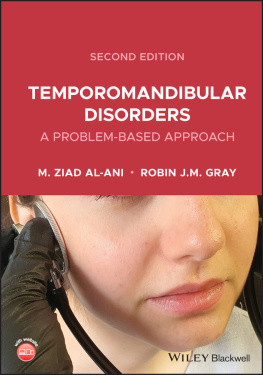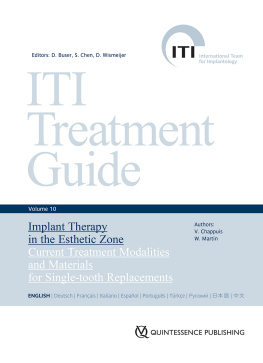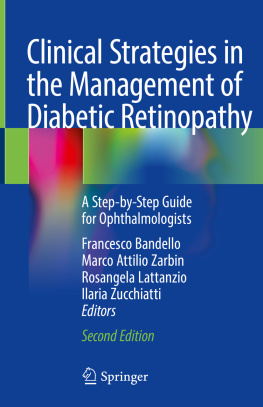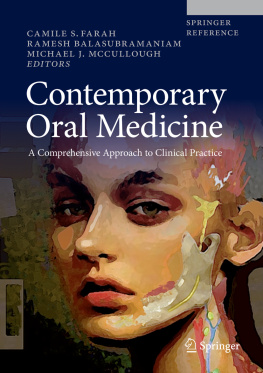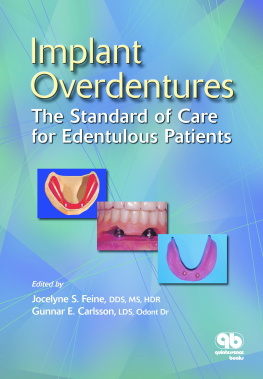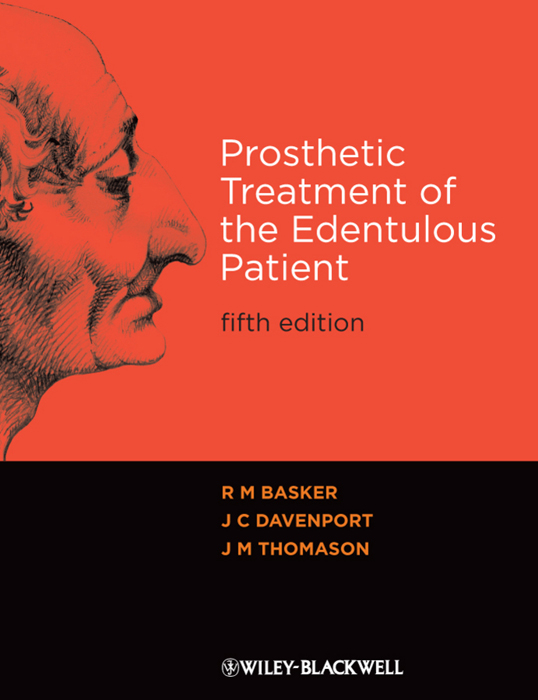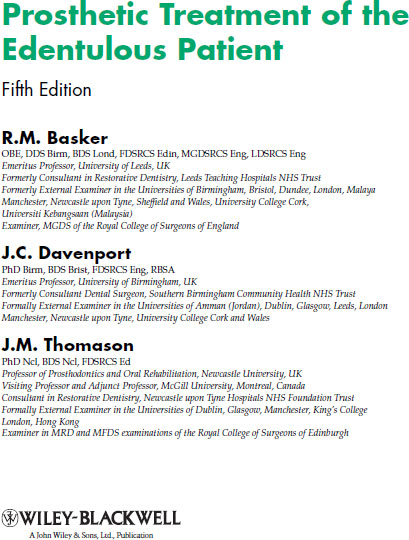This edition first published 2011
1976, 1983, 1992 by R.M. Basker, J.C. Davenport and H.R. Tomlin
2002 by Blackwell Munksgaard
2011 by R.M. Basker, J.C. Davenport and J.M. Thomason
Blackwell Publishing was acquired by John Wiley & Sons in February 2007. Blackwells publishing program has been merged with Wileys global Scientific, Technical and Medical business to form Wiley-Blackwell.
Registered office: John Wiley & Sons Ltd, The Atrium, Southern Gate, Chichester, West Sussex, PO19 8SQ, UK
Editorial offices: 9600 Garsington Road, Oxford, OX4 2DQ, UK
The Atrium, Southern Gate, Chichester, West Sussex, PO19 8SQ, UK
2121 State Avenue, Ames, Iowa 50014-8300, USA
For details of our global editorial offices, for customer services and for information about how to apply for permission to reuse the copyright material in this book please see our website at www.wiley.com/wiley-blackwell
The right of the author to be identified as the author of this work has been asserted in accordance with the UK Copyright, Designs and Patents Act 1988.
All rights reserved. No part of this publication may be reproduced, stored in a retrieval system, or transmitted, in any form or by any means, electronic, mechanical, photocopying, recording or otherwise, except as permitted by the UK Copyright, Designs and Patents Act 1988, without the prior permission of the publisher.
Designations used by companies to distinguish their products are often claimed as trademarks. All brand names and product names used in this book are trade names, service marks, trademarks or registered trademarks of their respective owners. The publisher is not associated with any product or vendor mentioned in this book. This publication is designed to provide accurate and authoritative information in regard to the subject matter covered. It is sold on the understanding that the publisher is not engaged in rendering professional services. If professional advice or other expert assistance is required, the services of a competent professional should be sought.
The contents of this work are intended to further general scientific research, understanding, and discussion only and are not intended and should not be relied upon as recommending or promoting a specific method, diagnosis, or treatment by physicians for any particular patient. The publisher and the author make no representations or warranties with respect to the accuracy or completeness of the contents of this work and specifically disclaim all warranties, including without limitation any implied warranties of fitness for a particular purpose. In view of ongoing research, equipment modifications, changes in governmental regulations, and the constant flow of information relating to the use of medicines, equipment, and devices, the reader is urged to review and evaluate the information provided in the package insert or instructions for each medicine, equipment, or device for, among other things, any changes in the instructions or indication of usage and for added warnings and precautions. Readers should consult with a specialist where appropriate. The fact that an organization or Website is referred to in this work as a citation and/or a potential source of further information does not mean that the author or the publisher endorses the information the organization or Website may provide or recommendations it may make. Further, readers should be aware that Internet Websites listed in this work may have changed or disappeared between when this work was written and when it is read. No warranty may be created or extended by any promotional statements for this work. Neither the publisher nor the author shall be liable for any damages arising herefrom.
Library of Congress Cataloging-in-Publication Data
Basker, R.M.
Prosthetic treatment of the edentulous patient / R.M. Basker, J.C. Davenport, J.M. Thomason. 5th ed.
p. ; cm.
Includes bibliographical references and index.
ISBN 978-1-4051-9261-3 (pbk. : alk. paper) 1. Complete dentures. 2. Edentulous mouth. I. Davenport, J. C. (John Chester) II. Thomason, J. M. III. Title.
[DNLM: 1. Denture, Complete. 2. Mouth, Edentulous. WU 530]
RK656.B338 2011
617.692dc22
2010040959
A catalogue record for this book is available from the British Library.
This book is published in the following electronic formats: ePDF [978-1-4443-9324-8]; ePub [978-1-4443-9325-5]
To our families
And to the memory of Bob Tomlin
Foreword to the First Edition
This addition to prosthetic literature must be widely and warmly welcomed. For a number of years there has been a shortage of British texts for students concerning the edentulous patient. The authors have, correctly, stressed the serious problems that more and more frequently present themselves now that life expectancy is on the increase and the average age of the edentulous is advancing. The dental profession is becoming aware of the particular geriatric situations it now has to face and this book will undoubtedly help in solving many prosthetic geriatric problems.
Emphasis has been placed more upon general principles than upon the minutiae of clinical or technical operative detail. Given a sound basic understanding of the principles to be observed in the treatment of the edentulous, chairside experience rapidly perfects each individuals manipulative skills.
Being not unfamiliar with the labours involved in producing textbooks, one is conscious of the time and effort that have gone into the preparation of this book. It should achieve all the success that these efforts of ones former colleagues deserve.
John Osborne
Shalfleet, Isle of Wight, 1975
Foreword to the Fifth Edition
The breakthrough of implant-supported and/or -retained prostheses has revolutionised dental treatment. A great part of the programmes at current prosthodontic conferences includes presentations based on high-tech implant treatment for partially and totally edentulous patients. So successful have the clinical outcomes with implant treatment been that many clinicians have come to believe that implants can solve all problems related to tooth loss. This is of course not true, confounded as it is not only by unfavourable oral situations but also by a number of non-dental factors. Of these, the greatest obstacle is undoubtedly economic. Viewed in a global perspective, poverty is still extremely widespread, and it exists even in many industrialised countries. Sadly, a majority of edentulous people will never be candidates for any type of implant therapy and complete dentures will remain their sole option.
The declining prevalence of edentulism would seem to indicate a reduction in the number of people in need of complete dentures. However, when epidemiological and demographic data are combined, the ongoing large increase in the number of the elderly will counteract the diminishing rate of edentulism. It is therefore likely that the need to rehabilitate edentulous patients will remain considerable for many more decades. Complete dentures will continue to play a central role in the rehabilitation of edentulism; thus, teaching and training in complete denture prosthodontics must continue.
This successful textbook has reached its fifth edition. It combines a straightforward description of well-proven principles and methods for the treatment of an edentulous patient with modern evidence-based examples of solutions for problems and complicated situations. The text is easy to read and the illustrations give excellent explanations of principles and techniques described. The book will therefore be of great value in both undergraduate and postgraduate education, and it deserves a place in the office of any dentist who treats adult and older patients.


